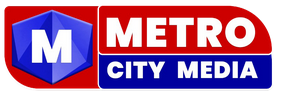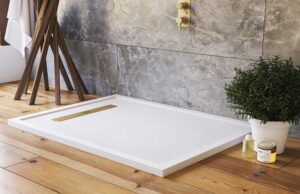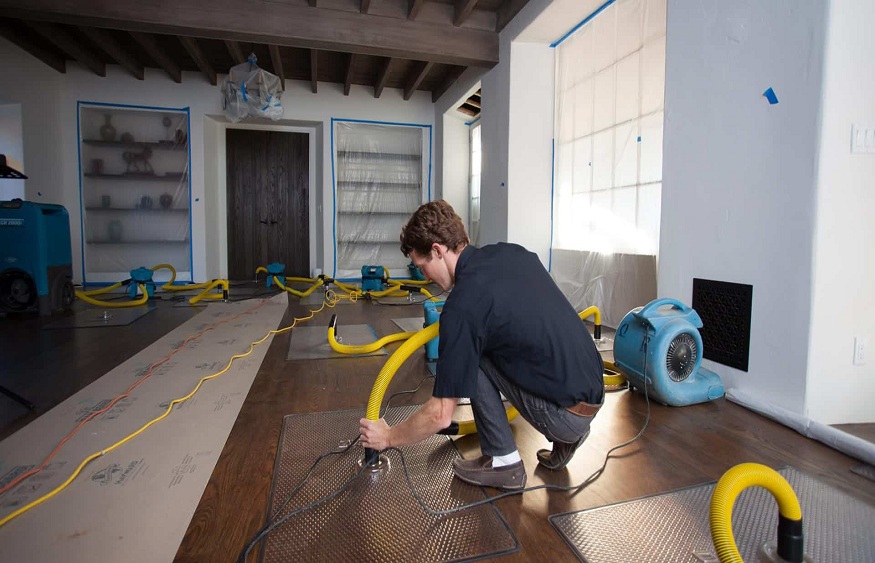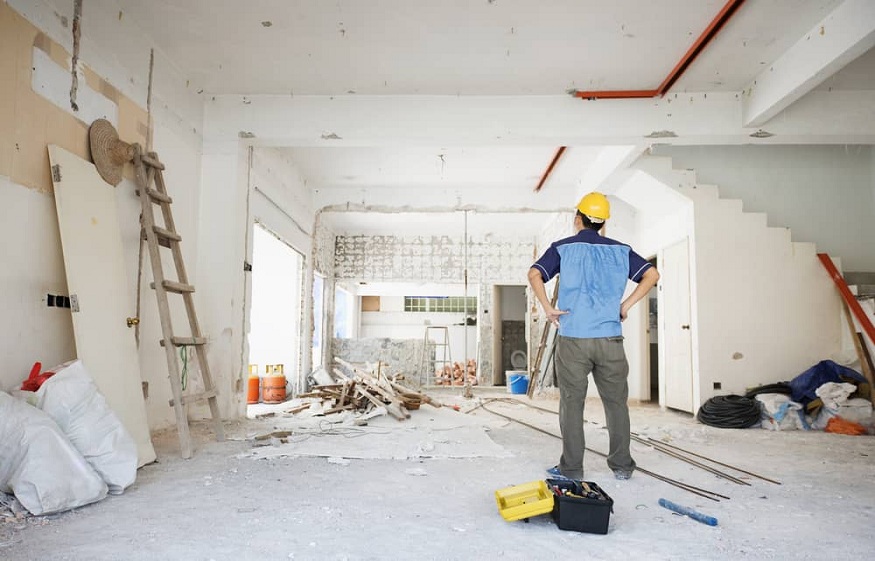Yesterday, shower trays (or shower trays) were most of the time in ceramic or enamelled stoneware , sometimes in thermoformed acrylic reinforced with fiberglass, more rarely in enamelled steel. But since the showers have gotten bigger, other materials have appeared which make manufacturing easier – a ceramic shower tray over 140 cm long is not easy to produce, especially when it comes to respecting the dimensional standards – while allowing new surface effects.
Synthetic materials for shower trays
The synthetic materials for shower trays can be classified into two families: on the one hand acrylic reinforced, no longer by fiberglass but by a solid composite material; on the other hand, synthetic concrete which, whatever the name it bears, is always composed of a mineral filler bound by a resin. The mineral filler can be stone, marble, volcanic rock… – and the resin can be acrylic, polyester or polyurethane. Thus, synthetic materials such as Quaryl (Villeroy & Boch), Cristaplant, Stonex (Roca), Quarrycast (Victoria +Albert), Hi-Macs, Biocryl (Kinedo), Krion (Porcelanosa), Neoquartz (Jacob Delafon), Corian (DuPont)… are made according to the same recipe, but they are not identical. Some are homogeneous, tinted in the mass, repairable, cuttable, coated with a finishing resin, structured on the surface… and others not. Because the nature of the mineral filler and the choice of resin influence the properties of the finished material, for example its hardness, its weight, its resistance to certain chemicals, etc.
Be careful when buying a tray made of synthetic material: if it has not been stored flat or on edge, it may no longer be completely flat, which you will only realize when time of laying.
What should guide the choice of the material of a shower tray
The destination of the shower tray is important for the choice. Thus, in a children’s bathroom, it is important to select a material that is as resistant as possible, either sandstone or enamelled steel , and to opt for white, on which traces of limestone do not appear. .
If you want to equip a large shower, replacing a bathtub for example, you can opt for an acrylic shower tray, which is the lightest material of all, facilitating installation.
The need to adapt the shower tray to the geometry of the premises or because of a crooked angle, the presence of a sheath, etc., is also a criterion to be taken into account, knowing that certain materials/receptacles can be factory-sized, including glazed stoneware, while others allow cutting directly on site (using a suitable tool). But overall, when looking for an original shape, for example a round shower tray , it is in the family of synthetic materials that it is advisable to look.
When the decorative aspect of the shower tray is important (colours, patterns, reliefs), synthetic materials are interesting, as are ceramics, with certain ranges offering decorations capable of transforming a bathroom.
In all cases, it is necessary to consult the manufacturers’ installation and use instructions (before purchasing), in order to know everything about the desired model: the installation methods allowed (flush-mounted, semi-flush-mounted, floor or even raised), resistance to chemicals, shocks and scratches, the non- slip nature of the tray surface. This is an effective way of not making mistakes.
Photo above: This tray is made of “resin and mineral”. But what is “resin and mineral”? Quite simply gelcoated resin concrete . Dimensions: 140 x 90cm. €349 including tax. Dala Graphite, Cooke & Lewis, Castorama.




